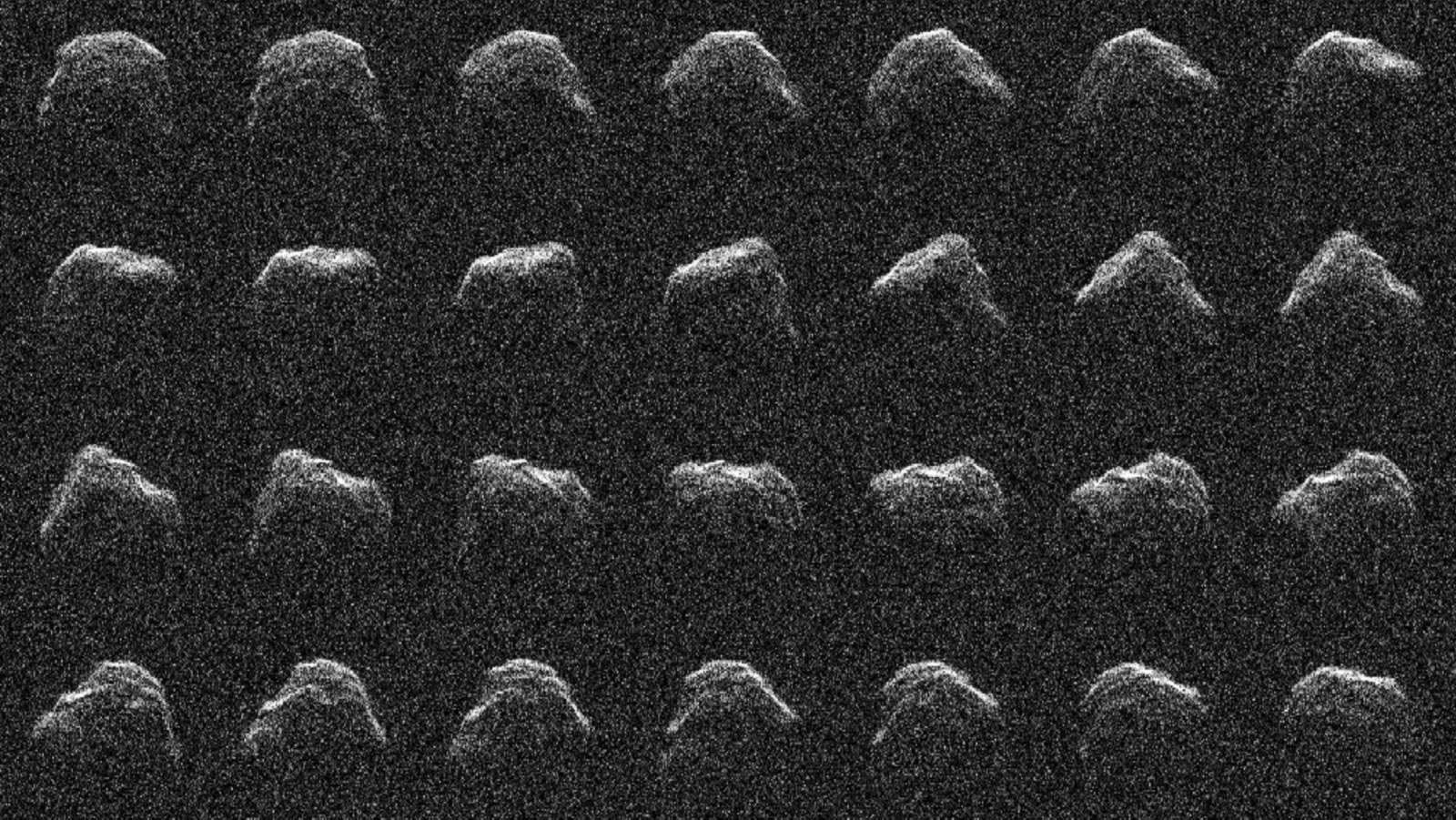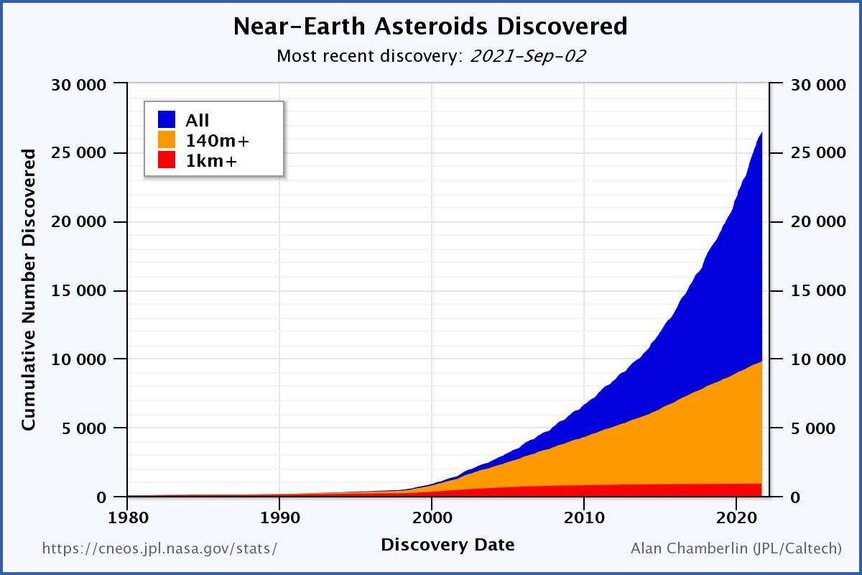Create a free profile to get unlimited access to exclusive videos, sweepstakes, and more!
Astronomical speed trap catches its 1000th asteroid

Astronomers reached a 1.6 kilometerstone* recently: They observed the 1,000th near-Earth asteroid via radar.
That’s a lot of rocks. But it’s only a fraction of what’s out there.
Near-Earth asteroids (or NEAs) are pretty much as advertised: Asteroids that get near Earth. Specifically they’re defined as any asteroid with an orbit that drops it as close as 145 million kilometers of the Sun (1.3 times the distance of the Earth from the Sun).
As of September 2, 2021, there are 26,520 NEAs known. Nearly a thousand are 1 km in size or bigger, and 10,000 larger than 140 meters across. The rest are smaller.
If they pass close enough to Earth, a few million kilometers or so, then they can be observed using radar. Astronomers use gigantic radio telescopes (like the NASA Goldstone facility and the late and lamented Arecibo Observatory) to send out pulses of radio waves that hit the asteroid and bounce back to Earth. This can be used to get an extremely accurate distance and velocity for the rock, and if it’s big enough and close enough its size and shape can be determined as well (it’s something of a complicated process; my friend and colleague Emily Lakdawalla has an excellent page describing it at The Planetary Society website).
The lucky 1,000th NEA observed this way was 2021 PJ1, a small rock probably 20 – 30 meters wide (so, a little bigger than the one that hit over Chelyabinsk, Russia in 2013). In August PJ1 passed a little over 1.6 million kilometers from Earth, and the Goldstone dish was used to take a look. It’s too small to get an image of, but the orbit was refined, which is cool.
The first asteroid ever observed this way was 1566 Icarus, a beefy asteroid over a kilometer wide seen in 1968. Observing a thousand more since then is an amazing achievement.
I’ll add that a week after PJ1 was observed they also observed the 1,001st NEA: 2016 AJ193, which is 1.3 km wide and passed us at 3.4 million kilometers. It rotates once every 3.5 hours, as can be seen in the series of images above, or this animation:
Cooooool.
Now the not-so-fun part. A subset of NEAs are PHAs, Potentially Hazardous Asteroids. These are defined as ones that have an orbit that takes them within 7.5 million kilometers of Earth’s orbit and are 140 meters in size or larger. Over time, asteroid orbits can change due to the gravity of the planets and the effects of sunlight, which is why the distance definition may at first seem rather large. Also, it can be hard to nail down the orbit precisely, so some fuzziness is allowed in the definition. The size definition is because at 140 meters the impact energy of such a beast becomes regional as opposed to just local, making them a decent threat.
Astronomers keep a pretty close eye on PHAs. The biggest threat right now belongs to Bennu, the 500-meter-wide rubble pile that was recently visited by the OSIRIS-REx spacecraft. If it hits the devastation would be considerable, but the odds of impact are low: Even adding up all the possible times it can hit us (the first such known approach is in 2178, the last in 2290) is only 1 in 1,800. Perhaps better stated that’s a 99.943% chance it’ll miss the Earth in every one of those 157 close approaches over the date range. So, not too big a deal.
Statistically speaking, something like 90% of all PHAs bigger than 1 km have been found, but that percentage is a lot lower for ones 140 meters or bigger. The good news here is that some pretty big sky surveys are coming online soon that will spot many more, and NASA is building a new spacecraft called the NEO Surveillance Mission to observe and characterize them even better.
Finding more may not seem like good news, but the thing is, they’re out there. If we find them then we know more about them, and if we spot one with our name on it then maybe we can take some action to prevent an impact. NASA and JPL are also building a mission called DART to investigate being able to push an asteroid into a safe orbit if needed, too.
Knowledge is power. In this case, knowledge may literally save humanity.
So this 1,000th asteroid given a little radar love is a good thing. When it comes to threats like these it’s far better to be looking up rather than having our heads in the sand.
*All metric all the time here, folks.




























